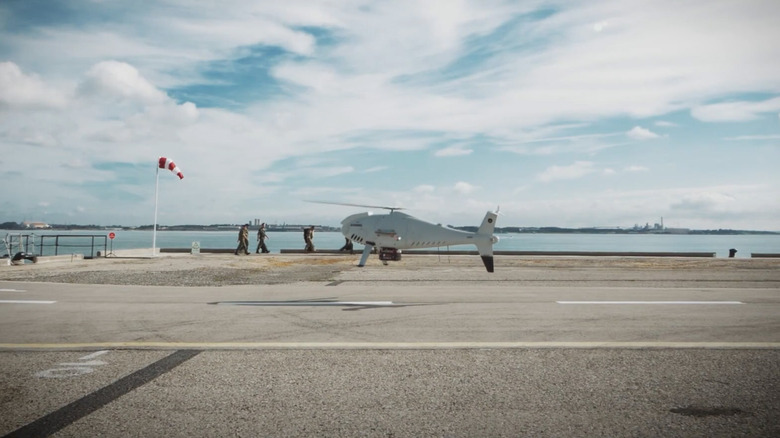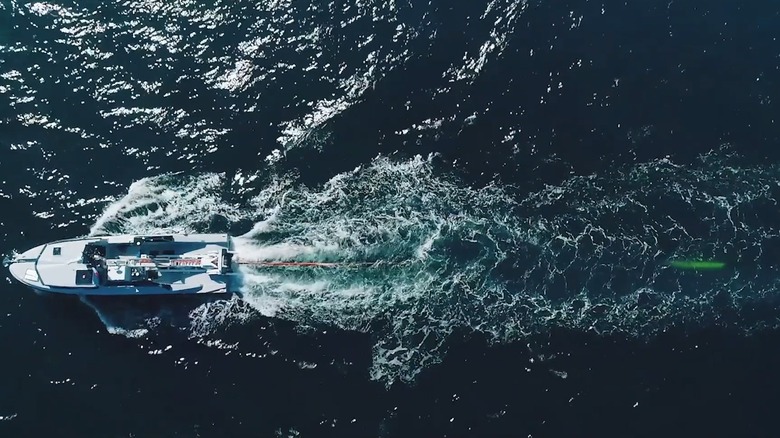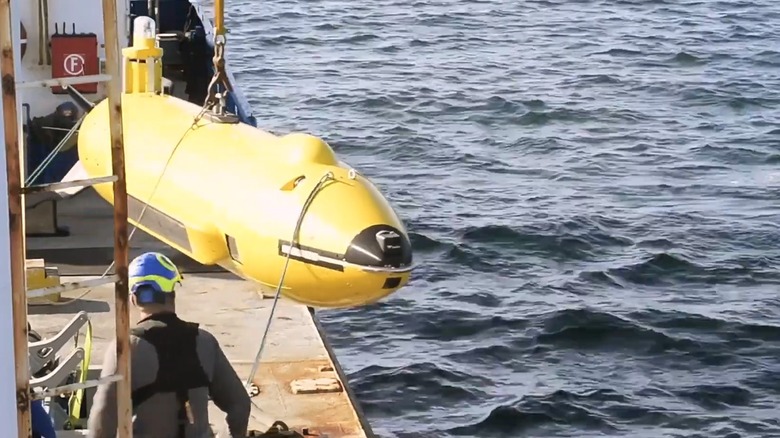These New Autonomous Drones Could Make Sea Mines Obsolete
Sea mines, or naval mines as some call them, are self-contained bombs placed into the water to destroy or disable both submarines and surface ships. Like antipersonnel or anti-tank mines, they're positioned in specific locations where enemy vessels might approach a harbor or other important area, and if such a vessel makes contact, everyone onboard will receive a nasty surprise. Sea mines can be tethered to the ocean floor, or tethered together in a cluster.
Sea mines have been around in one form or another since they were first used by Imperial China. Of course, the sea mines in use these days are considerably more sophisticated and deadlier than the ones employed hundreds of years earlier. Modern sea mines still pose a threat to all manner of naval vessels, especially submarines used in naval warfare, but that could be changing thanks to some interesting technology that's come out of the Thales Group in recent years.
Thales developed an autonomous naval drone system that was designed for one purpose: To hunt down and destroy sea mines. These new minehunting drones offer a new means of identifying and removing sea mines in a target area. Special vessels are typically equipped to find and remove mines, and many navies around the world continue to operate in that manner. Conversely, several nations are opting for less risky means, including France and the United Kingdom, which will receive the first step in Thales' new system by the end of 2024 and 2025, respectively.
The Pathmaster Program
The Thales Group has been hard at work for years to create a new stand-off mine countermeasure system. This is something that Belgium and the Netherlands are also doing, while other nations like Germany, Italy, and the United States currently work with crewed minesweeper ships. The stand-off countermeasure is a Mine Counter Measure (MCM) system called Pathmaster, which Thales describes as "The first fully configurable unmanned mine countermeasures system for naval forces."
The system features several components, including Thales and Exail's Synthetic Aperture Mine Detection Imaging Sonar (SAMDIS), which is used to find and identify mines. SAMDIS can view potential targets from three different angles, helping to improve identification measures. The system also provides Automatic Target Recognition (ATR), eliminating the need for post-mission analysis. Additionally, the Pathmaster system comes with a portable operations center, unmanned surface vehicles, and an underwater vehicle.
The surface drones are used in conjunction with SAMDIS to identify potential targets, and the submarine drone is used to neutralize those targets. Much of the system's operability is accomplished via autonomous functionality, but people are still required to make it all work. The drones measure around 16.4 feet in length with a diameter of only 18.5 inches. They weigh around 1,102 lbs. and can remain Fully Mission Capable (FMC) for up to ten hours at a depth of 984 feet. The system can also include an unmanned drone helicopter for surface and subsurface detection, so it's a diverse MCM.
How Pathmaster could make sea mines obsolete
All forms of mines are inherently dangerous, but only sea mines have the capacity to kill hundreds of sailors at once, so navies take them seriously. Current measures of using minehunter ships alongside sonar-towing vessels and diving boats work, but they put everyone involved at risk. Stand-off minehunting systems like Pathmaster offer a new option to endanger an army of undersea robots instead of humans. In many ways, naval warfare is evolving into drone warfare, similar to how operations are run in the air and on the ground.
While the Pathmaster system from the Thales Group is a fantastic step toward autonomous mine detection and destruction, it has room to grow. Thales has been working on finding a way to incorporate Light Detection and Ranging (LiDAR) into its mine-detection efforts. LiDAR could improve detection considerably, but there are challenges in making it work underwater. Ideally, LiDAR could be used to improve results where sonar has trouble, like in the so-called "bubble layer" near the surface.
Thales is also working on incorporating other sensor methods, including electro-optical, thermal imaging, millimeter radar, and long-wave infrared. If these systems could be employed simultaneously, they should cover any gaps in sensor data, ensuring the Pathmaster system operates at full capacity. Ultimately, only time will tell whether or not Thales' system will become the standard in sea mine clearance, but should it do so, there's a good chance future mine-clearing operations will be done entirely via drones.


